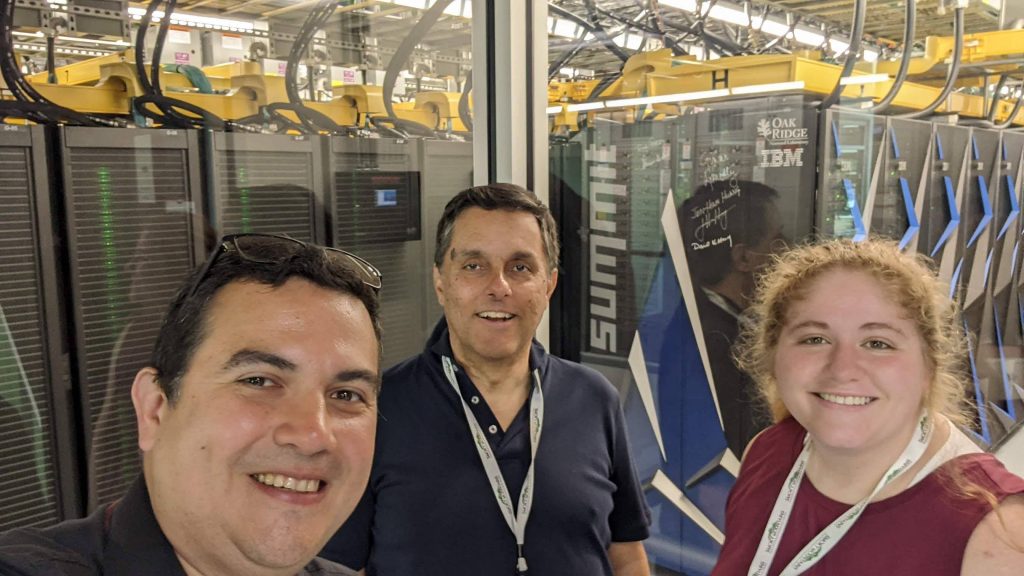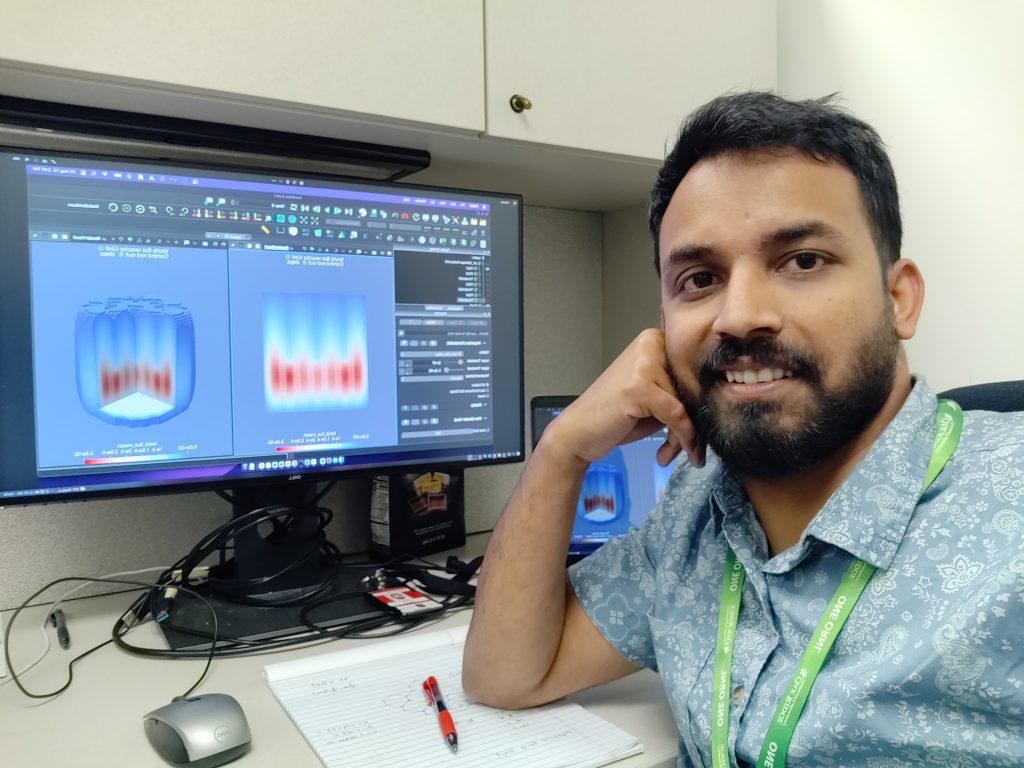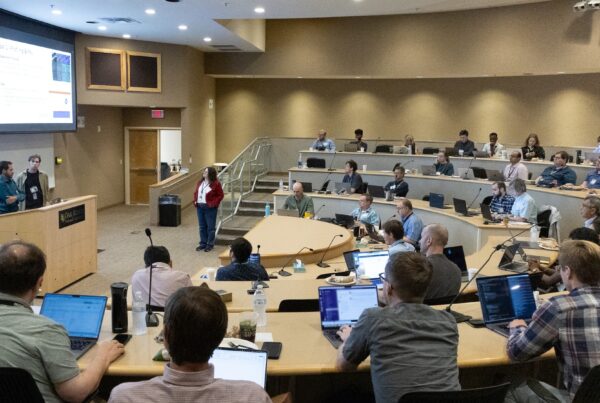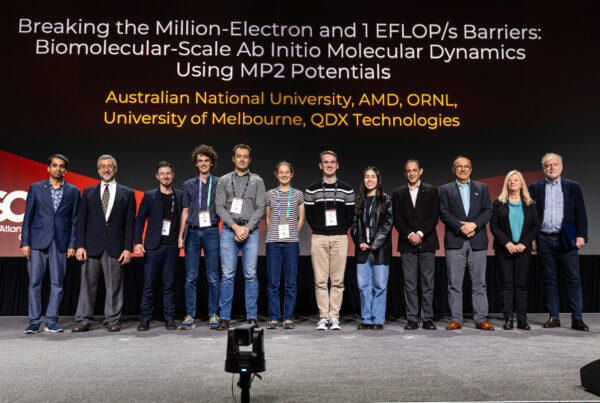At Grand Valley State University (GVSU) in Allendale, Michigan, Elise Dettling is entering her senior year as an undergraduate student of theoretical mathematics. She describes herself as having a “math brain.” She’s treasurer of the Math & Stats Club as well as the Applied Math Club. She has begun the process of applying for graduate school, with a doctorate in math her likely destiny. Or at least that was the case until she had her summer internship at the US Department of Energy’s (DOE’s) Oak Ridge National Laboratory (ORNL). Now, high-performance computing (HPC) has entered her world of options.
Last December, Dettling decided on a whim to apply for the Sustainable Research Pathways for HPC (SRP-HPC) internship program, which was launched this year by the Exascale Computing Project (ECP). Previously, she had not given HPC serious consideration as a career option. GVSU, a regional university of about 20,000 students, is known for its business and engineering programs. HPC? Not so much.
“I’m a mathematics undergrad, so I have no background in hardware. I have very minimal background in software. I do a lot of proofs—that’s what we do as math majors,” Dettling said.
Now, after completing the 10-week SRP-HPC internship program, Dettling has changed course.
“I’ve decided that I’m going for my PhD in computer science,” Dettling said. “The SRP program put HPC on my radar as a career choice, but it also helped me in more ways than one. Academically, I have a funded-research internship, which is amazing on its own. But I also have personally narrowed down my decisions of what I want to do, what I really like, and what I don’t like. It has been a really cool opportunity.”

Summer 2022 SRP-HPC intern Elise Dettling (right) poses for a group selfie in front of the Summit supercomputer. At left is her ORNL mentor William Godoy; and at center is her Grand Valley State University computer science professor, Christian Trefftz. Photo courtesy Christian Trefftz.
Dettling is among the first cohort of 61 interns in the SRP-HPC program, which is part of the ECP Broadening Participation Initiative, a concerted effort to build a more diverse workforce and foster an inclusive professional environment at the DOE’s array of HPC labs. SRP-HPC is based on a program that started in 2015 at Lawrence Berkeley National Laboratory and was developed by the Sustainable Horizons Institute, a nonprofit that fosters greater inclusion and diversity in STEM fields.
SRP-HPC seeks candidates from institutions outside of the usual HPC avenues—historically Black colleges and universities, Hispanic-serving organizations, and community and regional colleges, such as GVSU. This summer’s group of 6 SRP-HPC interns at ORNL’s Computing and Computational Sciences Directorate (CCSD) came from a variety of different cultural backgrounds and HPC experience levels.
A. S. M. Fakhrul Islam, a PhD student in nuclear engineering at the University of South Carolina (UofSC), has been working on his own design for a nuclear microreactor that he’s dubbed MINION. The modular and rapid deployment capabilities of microreactors will make them extremely useful in national defense and space exploration applications. As a native of Bangladesh—which despite producing only 0.56% of global emissions has been ranked the 7th most vulnerable country to climate change—Islam would also like to use nuclear reactors to help reduce global warming.
“Nuclear reactors will play a big role in slowing down the emission of carbon dioxide, methane, and nitrous oxide, which have reached unprecedented levels in the atmosphere in at least the last 800,000 years,” Islam said. “I am really excited to be a part of a research effort that is addressing the existential crisis we are facing for the first time in history.”

A. S. M. Fakhrul Islam, a PhD student in nuclear engineering at the University of South Carolina (UofSC), has been working on his own design for a nuclear microreactor that he’s dubbed MINION. Photo courtesy A. S. M. Fakhrul Islam.
Although Islam has been able to access UofSC’s HPC clusters to run neutronics and thermal hydraulics modeling of MINION to simulate fuel depletion, heat generation, and heat transfer, his SRP-HPC research project at the CCSD has opened his eyes to HPC code development. This summer, he worked with his mentor, researcher Steven Hamilton in ORNL’s HPC Methods for Nuclear Applications group, on verifying the accuracy of the Shift radiation transport code for executing multiphysics analysis using ORNL’s Summit supercomputer.
“I have been more like a nuclear reactor physics analyst, but after the summer research, I am now more open to working on the code development side as well,” Islam said.
Adam Goines, a mechanical engineering PhD student at Rensselaer Polytechnic Institute (RPI), had previous HPC experience using the school’s AiMOS supercomputer. Working with his mentor, CCSD computational scientist Reuben Budiardja, Goines helped develop machine learning code for astrophysics. The experience not only reinforced his career choice but has also suggested a possible place of future employment.
“I will consider national labs more as a potential career destination and am encouraged to continue in the field that I am studying at RPI,” Goines said. “HPC will continue to be seen as a tool, and I am encouraged to continue to refine my training on these machines as well as attending training when quantum HPC is more of a factor.”

Adam Goines, a mechanical engineering PhD student at Rensselaer Polytechnic Institute (RPI), helped develop machine learning code for astrophysics at ORNL. Photo by Clint Keeton/ORNL.
Another unique feature of the SRP-HPC program is its recruitment of student-faculty internship teams rather than only students. Dettling arrived at the ORNL campus with her GVSU computer science professor, Christian Trefftz. Together, they worked on a research project to compare different high-level programming models on computer languages Julia, Python/Numba, and Kokkos for CPU and GPU runs on OLCF systems. This effort led to a paper submitted to SC22 and coauthored by ORNL researchers Pedro Valero-Lara, Marc Gonzalez-Tallada, Ross Miller, Jeffrey Vetter, and the interns’ mentor, William Godoy.
“I have gained so much insight into the entire HPC process that it goes way beyond any expectations I may have had at the beginning,” Trefftz said. “When you hear about supercomputers, you imagine, yes, they are fast, and they are huge. There are going to be many research groups that are going to be able to do new scientific research. But to get to that particular point, it’s a very elaborate process, and that’s what this experience has shown me.”
Godoy, a senior computer scientist with the Software Engineering group within CCSD, has worked with interns his entire career, such as those in the GEM Fellow Internship Program at ORNL. He believes the SRP-HPC program can serve as a long-term investment for exposing HPC to underrepresented segments of the population and institutions. As a mentor, he was especially impressed with the program’s student-professor team approach and credits the SRP-HPC leadership for its vision.
“In his faculty role, Christian can inspire future students to pursue a career in HPC, while Elise is exploring grad school options aligned with her computer science and math interests,” Godoy said. “Bringing diverse perspectives and finding new talent is key to supporting the lab mission in HPC in the near future. It also serves as a great way to communicate the impact of DOE investments in our society.”
Click here for information on applying for the SRP-HPC internship program.
UT-Battelle LLC manages Oak Ridge National Laboratory for DOE’s Office of Science, the single largest supporter of basic research in the physical sciences in the United States. DOE’s Office of Science is working to address some of the most pressing challenges of our time. For more information, visit https://energy.gov/science.






